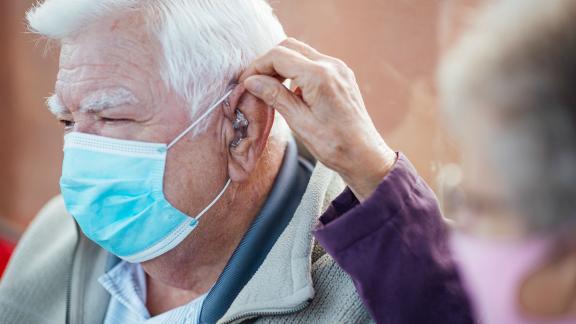Making NHS organisations more accessible environments
29 April 2022
Authors
-

Carol McIndoe is the patient experience improvement manager and disability equality lead at Gloucestershire Hospitals NHS Foundation Trust. In this blog she talks about her passion for disability equality and some of the work she has undertaken in various roles to improve accessibility for those with disabilities, including patients, visitors and staff.
Writing about disability equality is my passion. This may sound odd, but it has been the emphasis of my working life for 21 years. It is a rare treat to be able to talk about the successes I have been instrumental in actioning in the large NHS organisation I work in.
The 2001 amendment to the Disability Discrimination Act introduced a new requirement for service providers, to carry out access audits of their premises and to make adjustments to better meet the needs of disabled people.
In one of my earlier NHS roles in estates, I was trained by a professional access auditor with lived experience of disability, who had such a vibrant approach to life and to the injustice of inaccessibility, that the seed of vocation was planted, which has blossomed into a life-long passion.
Since 2001, I have carried out more than 100 access audits of GP practices, health centres and hospitals in Gloucestershire. I wanted the reports to be accessible themselves, so developed a template which includes photographs, describes each non-compliance with Approved Document M of the Building Regulations, and most importantly offers suggestions for how to overcome the barrier by altering it, removing it or providing an alternative.
Overcoming barriers
Fast forward to 2010 when I moved from the estates department into patient experience, as I felt it was important to broaden the scope of disability equality into areas such as clinical practice, staff attitudes/training and policy, not just in the built environment.
Accessibility of the built environment is important, as physical barriers to access for disabled people often result in poor experiences and can even impact on health outcomes.
The less clearly defined attitudinal barriers, or those embedded in process can be just as debilitating – in some instances more so than the more obvious physical barriers.
Unsurprisingly perhaps, this work is extremely challenging at times, as I take the responsibility of advocating for disabled people using our trust very seriously, either as patients, carers, visitors, volunteers, or staff.
I continue to advocate for disabled people coming into our trust, with the aim of eradicating as many barriers as possible and ensuring equitable experiences for disabled and non-disabled people.Practical improvements
There have been successes, all hard-fought and many taking place after years of perseverance:
- improvements to communication between the trust and Deaf British Sign Language (BSL) users, in collaboration with Gloucestershire Deaf Association (GDA) and following a focus group, including:
- adding alerts onto each known deaf BSL user’s electronic health record, so that staff accessing those records know they need to request an interpreter (GDA contact details included)
- launching an ‘I am deaf’ card, with the contact details for accessing BSL interpreters, which is carried by all deaf BSL users in the county and presented to staff on arrival in our hospitals
- counter-top notice prompting deaf BSL users to present their ‘I am deaf’ card on one side, with information for staff on the reverse
- wayfinding redesign for one of our large acute hospitals
- the conversion of a staff-only exit into an accessible public entrance, with automatic doors, clear signage and improvements made to the entrance ramp
- automatic doors – either push pad or automatic open on approach
- installation of changing places fully accessible sanitary facilities
- the distribution of personal listening devices on every adult ward, with accompanying written guidance for use.
Tips for organisations
- Seek input from disabled staff, disabled staff networks, disabled patients, carers and visitors to understand the barriers from a lived experience perspective.
- Train your staff to interact effectively with people with communication needs, as a significant part of your organisations’ communication training.
- Ensure your managers and supervisors are trained, equipped for, and confident about having open dialogue with their disabled staff.
- Provide training for staff around challenging unhelpful assumptions – if in doubt, ask the individual about their preferences and needs.
Further information
Find out how to support deaf colleagues in the workplace, join our webinar on 10 May at 11.30am.
Access further guidance on supporting disabled colleagues in the workplace, including providing reasonable adjustments to support colleagues in their roles. Learn about the NHS Workforce Disability Equality Standard.
- improvements to communication between the trust and Deaf British Sign Language (BSL) users, in collaboration with Gloucestershire Deaf Association (GDA) and following a focus group, including:
